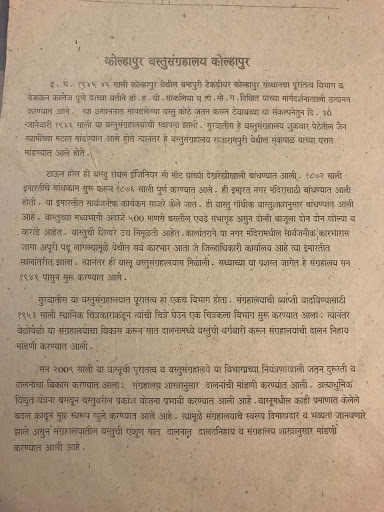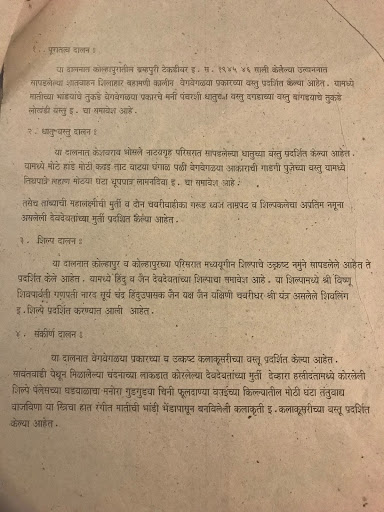The Town Hall Museum is displayed in a heritage building with elements of neo-Gothic architecture, which served as the town hall during the British period and later became home to the diwan of the local monarch, Chhatrapati Shahu Maharaj. The structure was built along with a bandstand during 1872–76 under the supervision of a British engineer, Charles Mant, and required an investment of 80,000 from the royal treasury. The museum was inaugurated in the year 1945–46. Its current collections were earlier displayed at the Jain Math in Shukrawar Peth, then shifted to the residence of the Sankpal family in Rajarampuri and thereafter brought to the Town Hall Museum in 1949.
The original intent of this establishment was to preserve the items obtained from excavations at the Brahmapuri Hills in the 1940s that belonged to the Satavahana (ca. 200 BCE to ca. CE 200) and Shilahara–Bahmani periods (ca. CE 1100–1500). This archaeological project was headed by H.D. Sankalia and M.G. Dikshit from the Deccan College, Pune.
In 1953, the museum’s collection expanded with the addition of paintings belonging to acclaimed local artists such as Ravindra Mestry, Baburao Painter, Dattoba Dalvi and Abalal Rahiman, to name a few. Around the same time, local residents donated items of historical and aesthetic significance; these items now largely make up the museum’s miscellaneous section. In 1968, galleries for archaeological remains, sculptures, bronze objects and weapons were introduced, and the artillery section was transferred from the museum at Sawantwadi. The bronze gallery consists of finely carved statues, figures of deities and emblems symbolising the Shilahara dynasty. Some of the artefacts have also been obtained from the Keshavrao Bhonsle Auditorium, Kapiltirth and the surrounding areas that form the older parts of the city.
16.7012853, 74.223723
















There are certain items made of sandalwood, ivory and stone that can hold even a casual visitor’s attention. A chain made of stone, pith work of human figurines surrounded by a blossom tree, nineteenth-century mouth organs made of terracotta and shaped like birds and fish are some of the many attractions. Among the twelfth-century sculptures, there is a set of dancing female figures holding instruments such as cymbals, flutes and mridangams.
The miscellaneous section also exhibits a large bell that was hung outside one of the gates of the Mahalaxmi Temple as early as 1901. It was acquired after the Vasai Fort was captured from the Portuguese, and was later gifted to Chhatrapati Shahu Maharaj by Chinnaji Appa. The bell was brought to the museum for preservation purposes.
There is bound to be curiosity regarding the relevance, purpose or cultural significance of a few artefacts as well as the material and the stylistic features that stand out for a particular period. These can be addressed by a more nuanced and systematic delivery of information.
